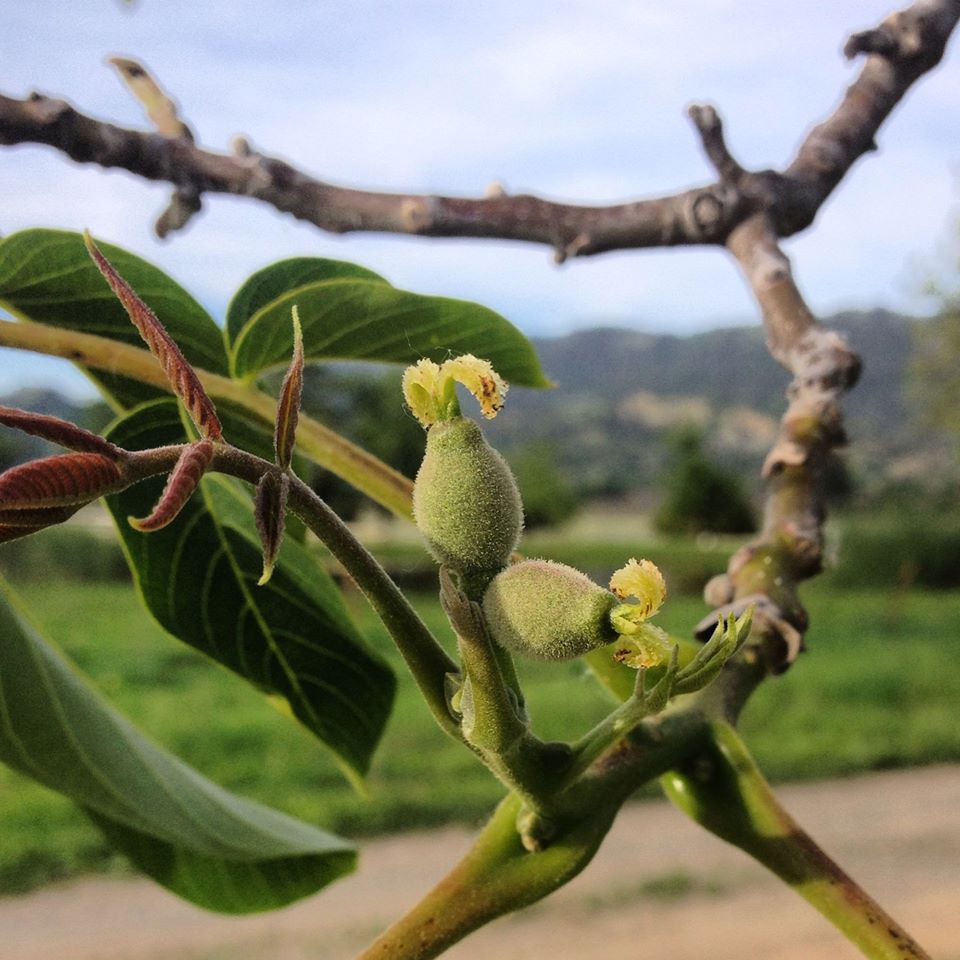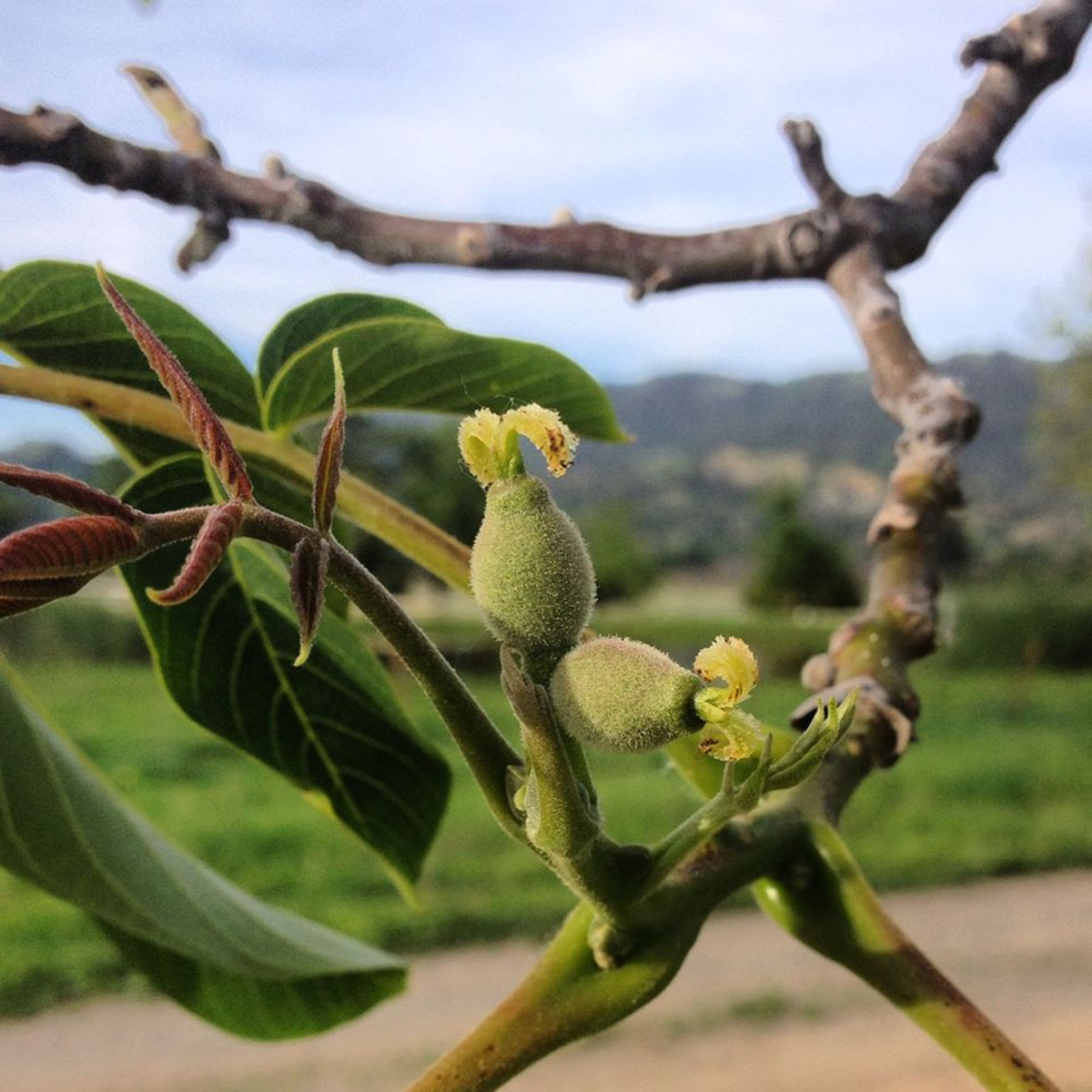"I didn't even know walnuts grew on trees." We hear this phrase quite often when people ask about our walnuts or see our Instagram account. There are a lot of things we don't know about our food, from how it grows, to where it comes from. Think about it. Can you picture the plant of every item of produce which is sitting on your countertop or in your refrigerator right now? Maybe you can, maybe you can't. Either way, it's ok. We promise we're not judging you.
Did you know a walnut tree does not require a single bee to pollinate and produce nuts? Walnuts are pollinated by air currents (anemophilous). Good ol' wind. All walnut trees produce a yellow-green flower tendril called a "catkin" which covers the branches of the trees in early spring. The word catkin comes from the Dutch word katteken, meaning "kitten," due to its likeness to a kitten's tail. These are slim, cylindrical clusters which hang from the tree and contain many, usually unisexual, flowers for pollination.
Small walnut buds start to grow after the catkin is pollinated. This is the beginning of the nut you know as a walnut. They are little, green, mini-sized walnuts with a yellow flower. Here in California, these "baby walnuts" usually appear between the months of March and early April.
From this point on, all that's needed for the tree to produce their bounty is water, sun and loving care. A few years back, we had a late spring freeze and cold front which froze and killed all the catkins on our trees. This resulted in a catastrophic loss of our entire crop. Once those catkins die off, the trees are not able to produce another round within the same growth cycle.
It's difficult to watch your crop vanish right before your eyes. We are stewards of the land and caretakers of these living trees. We also understand nature and its capacity to change or affect the livelihood of any farmer, good or bad. We do what we can to keep an eye on potential damaging storms, though in the end, all we can do is hope for the best. This is the life of a farmer. Every year.



